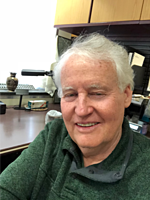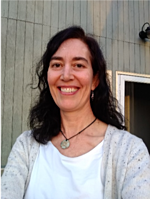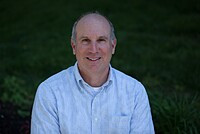When Dr. Shanna Swan first read a report about declining sperm counts that was published in 1992, she was skeptical but intrigued. She spent the subsequent 25 years investigating this alarming drop, first looking for ways to explain it away, and when she could not, looking for the “bad actors” that could explain this real and persistent decline. During this quest, Dr. Swan learned about the devastating power that chemicals, hidden but prevalent in our daily lives, have in altering men’s and women’s ability to conceive and deliver a healthy baby. She learned that these chemicals do far more than just lower sperm count; they take a toll on many aspects of our health and longevity, as well as that of future generations. What Dr. Swan found was so disturbing that she felt compelled to write Count Down in the hope that she could be heard outside the scientific community and hopefully motivate the action this reproductive and environmental crisis demands. During this webinar she shared highlights of that journey and read some excerpts from Count Down. Dr. Swan hopes to convince you (beyond reading the book) that the threats she describes are real and imminent and must be addressed now.
This webinar is one in a monthly series sponsored by the Collaborative on Health and the Environment’s EDC Strategies Partnership. The CHE EDC Strategies Partnership is chaired by Sharyle Patton (Commonweal Biomonitoring Resource Center), Jerry Heindel (Commonweal HEEDS, Healthy Environment and Endocrine Disruptor Strategies), and Genon Jensen (HEAL) and coordinated by Hannah Donart (Collaborative on Health and the Environment, a Commonweal program). To see a full list of past calls and webinars related to EDCs and listen to or view recordings, please visit our partnership page.
This webinar was moderated by Jerry Heindel, PhD, founder and director of Commonweal's Healthy Environment and Endocrine Disruptor Strategies (HEEDS). It was pre-recorded and lasted for 70 minutes. Dr. Swan will respond to questions as she is able via her twitter account @DrShannaSwan.
Featured Speakers
 Shanna H. Swan, PhD, MS, has worked for over twenty-five years to understand the threats posed by chemicals to our environment and our health, and, when necessary, to develop new paradigms to assess their risks. Of most concern to Dr. Swan are the chemicals that our bodies can confuse with its own hormones (the “endocrine disrupting” chemicals). At the Mount Sinai School of Medicine, Dept of Preventive Medicine, Dr. Swan is working with a wide range of collaborators, including epidemiologists, biostatisticians, toxicologists, geneticists and systems biologists, to conduct studies and develop methods to evaluate the risks from such chemicals — methods that are sensitive enough to tease out the often subtle health effects of complex mixtures
Shanna H. Swan, PhD, MS, has worked for over twenty-five years to understand the threats posed by chemicals to our environment and our health, and, when necessary, to develop new paradigms to assess their risks. Of most concern to Dr. Swan are the chemicals that our bodies can confuse with its own hormones (the “endocrine disrupting” chemicals). At the Mount Sinai School of Medicine, Dept of Preventive Medicine, Dr. Swan is working with a wide range of collaborators, including epidemiologists, biostatisticians, toxicologists, geneticists and systems biologists, to conduct studies and develop methods to evaluate the risks from such chemicals — methods that are sensitive enough to tease out the often subtle health effects of complex mixtures
 A champion of green science, Terry Collins, PhD, is renowned internationally for his invention of a new class of oxidation catalysts called TAML®s and for his broader sustainability leadership. He is the Teresa Heinz Professor of Green Chemistry and the Director of the Institute for Green Science at Carnegie Mellon University in Pittsburgh, Pennsylvania. Collins earned his undergraduate and doctoral degrees from the University of Auckland (UoA) where he is a Distinguished Alumnus. He carried out postdoctoral studies at Stanford University. He first learned of the insidious health damage caused by chemical pollutants while a student at UoA. In his independent career, he created an iterative catalyst design program, first to explore whether bioinspired, environmentally benign and cost-effective technologies could be developed to replace chlorine for water disinfection to escape toxic chlorinated disinfection byproducts. Iterative evolution over decades led to “TAML® activators” and then serial inventions turned TAMLs into the highest technical performance hydrogen peroxide catalysts across both chemistry and biology. Professor Collins and his brilliant team have shown that TAML systems can kill hardy pathogens and eliminate numerous micropollutants, water contaminants that are toxic at low concentrations. The latest TAMLs are so effective in turning hydrogen peroxide into fire-in-water that they deliver a platform technology where infinitesimal quantities of the catalyst with small quantities of peroxide will purify water of many of the most dangerous chemical residuals to underpin the new field of Sustainable Ultra-dilute Oxidation Catalysis(SUDOC). The CMU spinoff company, Sudoc, LLC , was cofounded in late 2020 by Professor Collins and six other devoted environmental leaders. Terry Collins is the leading voice in academic chemistry for guiding the chemical enterprise to deal with the low dose adverse effects of everyday-everywhere chemicals (Lodafs) where endocrine disruption is the best understood suit of underlying mechanisms. Collins’s teaching and extensive multidisciplinary academic and entrepreneurial programs are aimed at providing solutions to lodaf challenges for the world. Lodafs are fast-acting threats to all higher lifeforms and are, for example, powerfully linked to the rapidly evolving trend toward sterility among western males that is so beautifully explained in Shanna Swan’s soon-to-publish, Countdown. As Professor Collins puts it, “By 2040 most Western males will be unable to father a child the old-fashioned way and the case that endocrine disrupting chemicals are significantly responsible is unimpeachable. Dr. Swan’s Countdownhas the inspirational content to drive society to insist that chemicals be regulated properly to permit a good future for our children and grandchildren.”
A champion of green science, Terry Collins, PhD, is renowned internationally for his invention of a new class of oxidation catalysts called TAML®s and for his broader sustainability leadership. He is the Teresa Heinz Professor of Green Chemistry and the Director of the Institute for Green Science at Carnegie Mellon University in Pittsburgh, Pennsylvania. Collins earned his undergraduate and doctoral degrees from the University of Auckland (UoA) where he is a Distinguished Alumnus. He carried out postdoctoral studies at Stanford University. He first learned of the insidious health damage caused by chemical pollutants while a student at UoA. In his independent career, he created an iterative catalyst design program, first to explore whether bioinspired, environmentally benign and cost-effective technologies could be developed to replace chlorine for water disinfection to escape toxic chlorinated disinfection byproducts. Iterative evolution over decades led to “TAML® activators” and then serial inventions turned TAMLs into the highest technical performance hydrogen peroxide catalysts across both chemistry and biology. Professor Collins and his brilliant team have shown that TAML systems can kill hardy pathogens and eliminate numerous micropollutants, water contaminants that are toxic at low concentrations. The latest TAMLs are so effective in turning hydrogen peroxide into fire-in-water that they deliver a platform technology where infinitesimal quantities of the catalyst with small quantities of peroxide will purify water of many of the most dangerous chemical residuals to underpin the new field of Sustainable Ultra-dilute Oxidation Catalysis(SUDOC). The CMU spinoff company, Sudoc, LLC , was cofounded in late 2020 by Professor Collins and six other devoted environmental leaders. Terry Collins is the leading voice in academic chemistry for guiding the chemical enterprise to deal with the low dose adverse effects of everyday-everywhere chemicals (Lodafs) where endocrine disruption is the best understood suit of underlying mechanisms. Collins’s teaching and extensive multidisciplinary academic and entrepreneurial programs are aimed at providing solutions to lodaf challenges for the world. Lodafs are fast-acting threats to all higher lifeforms and are, for example, powerfully linked to the rapidly evolving trend toward sterility among western males that is so beautifully explained in Shanna Swan’s soon-to-publish, Countdown. As Professor Collins puts it, “By 2040 most Western males will be unable to father a child the old-fashioned way and the case that endocrine disrupting chemicals are significantly responsible is unimpeachable. Dr. Swan’s Countdownhas the inspirational content to drive society to insist that chemicals be regulated properly to permit a good future for our children and grandchildren.”
 John Peterson “Pete” Myers, PhD, is founder and Chief Scientist of Environmental Health Sciences, a not-for-profit organization that promotes public understanding of advances in scientific research on links between the environment, including climate, and human health (www.EnvironmentalHealthNews.org).
John Peterson “Pete” Myers, PhD, is founder and Chief Scientist of Environmental Health Sciences, a not-for-profit organization that promotes public understanding of advances in scientific research on links between the environment, including climate, and human health (www.EnvironmentalHealthNews.org).
For a dozen years beginning in 1990, Dr. Myers served as Director of the W. Alton Jones Foundation in Charlottesville, Virginia. Along with co-authors Dr. Theo Colborn and Dianne Dumanoski, Myers wrote “Our Stolen Future,” a book (1996) that explores the scientific basis of concern for how contamination threatens fetal development. Vice-President Al Gore wrote the foreword.
Dr. Myers is actively involved in primary research on the impacts of endocrine disruption on human health. He is on the boards of the Science Communication Network and the Jenifer Altman Foundation. He has also served as board chair of the National Environmental Trust and the H. John Heinz Center for Science, Economics and the Environment. He is an Adjunct Professor of Chemistry at Carnegie Mellon University.
Over the last few years he has received 3 major national and international awards: the first “Champion of Environmental Health Research” award from the U.S. National Institutes of Health (of the 11 awardees in addition to Myers, 3 others were the current and former directors of the National Institute of Environmental Health Sciences); the Laureate Award for Outstanding Public Service from The Endocrine Society (the world’s largest association of medical and research professionals specializing in endocrinology); and the Distinguished Service Award from the Sierra Club.
Myers lives just outside White Hall, Virginia. As he was growing up he lived near Baltimore and in Mexico, Nicaragua, Colombia, Uruguay and Paraguay. Dr. Myers holds a doctorate in the biological sciences from the University of California, Berkeley and a BA from Reed College.
 Thea Edwards, PhD, MS, is an interdisciplinary scientist, with two decades of aquatic ecology and environmental health experience. Since 2018, she has served as Branch Chief of Biochemistry and Physiology at the United States Geological Survey’s (USGS) Columbia Environmental Research Center in Columbia, Missouri. Her team works across scales of biological organization, from genes to ecosystems, to understand how contaminants affect aquatic organisms, both directly to cause health disorders, and indirectly by changing ecosystem functions. Dr. Edwards completed her bachelor’s degree at Virginia Tech, master’s and doctoral degrees at the University of Florida, and postdoctoral studies at Tulane University. In 2016, she was a Fulbright Scholar with the Okavango Research Institute in Botswana. Graduate school introduced Edwards to the field of endocrine disruption, which examines how environmental contaminants interact with and change the internal functions of animal bodies, and how these changes impair health. The effects of endocrine disruption are usually more subtle than outright toxicity, but the impact to individuals or populations can be just as serious. Infertility is a well-studied example, as Shanna Swan explains in her new book, Countdown.While Dr. Swan’s focus is human sexual development and fertility, the risk of endocrine disruption goes beyond human health to all living organisms, because basic features of biology are shared across life forms. This premise is especially visible in Dr. Edwards’s current research program on nitrate and ammonia, two widespread forms of environmental nitrogen that shape the health of organisms and ecosystems in complex ways.
Thea Edwards, PhD, MS, is an interdisciplinary scientist, with two decades of aquatic ecology and environmental health experience. Since 2018, she has served as Branch Chief of Biochemistry and Physiology at the United States Geological Survey’s (USGS) Columbia Environmental Research Center in Columbia, Missouri. Her team works across scales of biological organization, from genes to ecosystems, to understand how contaminants affect aquatic organisms, both directly to cause health disorders, and indirectly by changing ecosystem functions. Dr. Edwards completed her bachelor’s degree at Virginia Tech, master’s and doctoral degrees at the University of Florida, and postdoctoral studies at Tulane University. In 2016, she was a Fulbright Scholar with the Okavango Research Institute in Botswana. Graduate school introduced Edwards to the field of endocrine disruption, which examines how environmental contaminants interact with and change the internal functions of animal bodies, and how these changes impair health. The effects of endocrine disruption are usually more subtle than outright toxicity, but the impact to individuals or populations can be just as serious. Infertility is a well-studied example, as Shanna Swan explains in her new book, Countdown.While Dr. Swan’s focus is human sexual development and fertility, the risk of endocrine disruption goes beyond human health to all living organisms, because basic features of biology are shared across life forms. This premise is especially visible in Dr. Edwards’s current research program on nitrate and ammonia, two widespread forms of environmental nitrogen that shape the health of organisms and ecosystems in complex ways.
 Russ Hauser, MD, ScD, MPH, is the Frederick Lee Hisaw Professor of Reproductive Physiology and Professor of Environmental and Occupational Epidemiology at Harvard TH Chan School of public health.He is the Chair of the Department of Environmental Health at the Harvard TH Chan School of Public Health. He is also professor of obstetrics and gynecology and reproductive biologyin the Harvard Medical School.
Russ Hauser, MD, ScD, MPH, is the Frederick Lee Hisaw Professor of Reproductive Physiology and Professor of Environmental and Occupational Epidemiology at Harvard TH Chan School of public health.He is the Chair of the Department of Environmental Health at the Harvard TH Chan School of Public Health. He is also professor of obstetrics and gynecology and reproductive biologyin the Harvard Medical School.
Dr Hauser’s research interests are in the fields of reproductive, perinatal and pediatric epidemiology. He is a world renowned expert on the impact of environmental chemicals on fertility, pregnancy outcomes and children’s health. He has published almost 400 papers focusing on exposure to a variety of environmental chemicals in relation to male and female fertility, pregnancy outcomes and children’s health.
